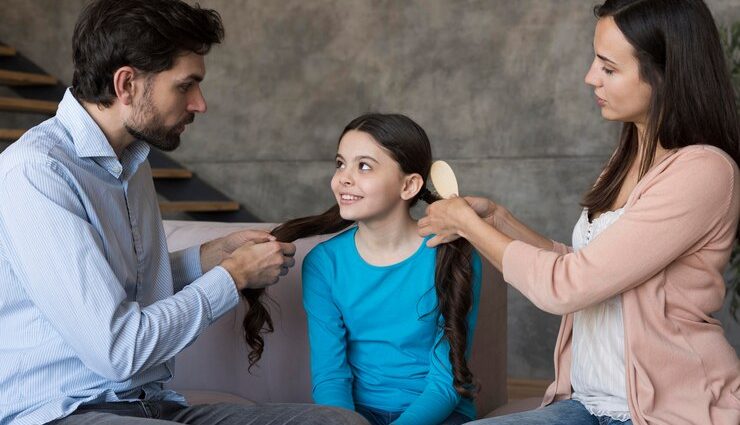All human feelings and emotions are reflected, in one way or another, in the facial expressions and posture of each person. That is why we speak of a body language of anxiety, just as there is a body language of depression, joy, fear, etc. We are all, at the same time, capable of reading, without using our will, the meaning of these languages.
This communication through the body gives a certain tone to our interactions with others. It creates a specific climate, in which spontaneity, tension, disinterest, or a certain type of emotion prevail. What is expressed through words is only one part of communication. The rest, and more profound, is the responsibility of body language.
Several elements in the body language of anxiety reveal the state of nervousness or restlessness. They have to do with the facial expression, the movement of the limbs, and the general posture of the body. Let’s see what some of these elements are.
Hands in the body language of anxiety
Hands are one of the most important elements in the body language of anxiety. One of the gestures that reveal inner anxiety is hiding them. Since ancient times, leaving your hands visible to others has been a gesture of peace, harmony, and friendship. It implies that you are not hiding anything, that you are not carrying a weapon or anything that could harm others.
Unconsciously, we leave our hands visible to others when we are calm. However, when we feel afraid, distrustful of the situation, or want to express our reservations, we do the opposite. We hide our hands, either by putting them in our pockets, putting them behind us, or leaving them under the table, etc.
The look, another revealing element
The look is another of those elements that always reveal the state of mind. When a person is anxious, their entire face and body in general denote a certain rigidity. It is usual for them to have a frown, which is why it is very common for a person in that state to be asked if they are in a bad mood, or if something is worrying them. It is also common for this manifestation to make others see us as serious people.
There is a particular gesture of the gaze that shows this state of anxiety. It has to do with combining a completely fixed gaze with moments in which the exposed area of the eye is reduced and the head is lowered. Sometimes one predominates more than the other, but in general, they are gestures that are present in people with a high state of anxiety.
It should be remembered that anxiety involves a feeling of worry that is constant, but at the same time indefinite. This also includes a certain irritation and general intolerance towards the environment. That is why the fixed gaze, which denotes a certain aggressiveness, is combined with the downcast gaze, which is a sign of introspection.
Other gestures that denote anxiety
Biting is one of the most common gestures in states of anxiety. It is most evident when, for example, you bite your nails. However, not everyone has this habit, but you may have the habit of biting other objects such as pencils, erasers, or any object you have at hand. It is also very common that, when someone is nervous, they bite their lips. It is a gesture of restraint that denotes anxiety. The same occurs with actions such as chewing gum or similar actions.
Another element that reveals anxiety is continuous and compulsive movements Sometimes it is the famous crossed leg that swings and does not stay still for a moment. Other times it is an object that is played with in the hands, without stopping. It can also be a tic, tapping the floor with the feet, drumming the fingers, or something similar. All of this denotes restlessness and nervousness.
Anxiety is unique in that it is easily transmitted, especially if the person or people you are talking to are also tense That is why the body language of anxiety is more than just anecdotal. It is a telltale sign of anxiety itself. On the one hand, it shows that there are concerns to be resolved. On the other hand, it can harm communication with others.
All sources cited were thoroughly reviewed by our team to ensure their quality, reliability, timeliness, and validity. The bibliography of this article was considered reliable and of academic or scientific accuracy.
- Baró, T. (2012). The great guide to non-verbal language: How to apply it in our relationships to achieve success and happiness. Grupo Planeta (GBS).
